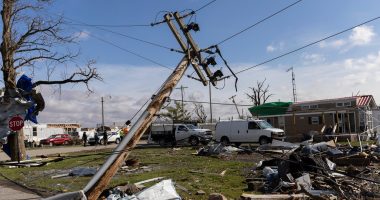
SHANGHAI— Tesla Inc. TSLA -2.00% exported most of the cars produced at its Shanghai factory in April, raising questions about the strength of demand for its electric vehicles in China after a run of adverse publicity.
The EV maker sold 11,671 locally built Model 3 and Model Y cars in China last month, while exporting a further 14,174, according to the China Passenger Car Association. The association confirmed Wednesday that a wholesale figure of 25,845 published the day before combined local sales and exports. It was the first time it broke down the sales that way.
Tesla didn’t immediately respond to questions. The company doesn’t publish monthly sales figures and releases only global sales data each quarter. On Tuesday, the association said Tesla’s April wholesale figure of 25,845 was down 27% from March, worse than the 12% month-on-month decline in overall electric vehicle sales.
Some analysts have questioned whether there would be enough demand in China to absorb most of the Shanghai factory’s planned output of 500,000 vehicles a year. While a portion of the company’s Chinese production could be earmarked for export, the bulk of buyers would likely need to come from China—the world’s largest auto market—for the factory to be sustainable. Demand from the rest of Asia is relatively weak and Tesla is planning new production plants in Europe and the U.S., its other main markets.
Tesla started exporting Model 3s from China to Europe last year, with 7,000 cars arriving in two shipments in October and December, according to the company. Tesla’s new plant in Berlin is due to start production later this year. The company has said the Berlin plant will initially assemble the Model Y.
A second U.S. factory, which will complement Tesla’s plant in Fremont, Calif., is also under construction near Austin, Texas. The company has said it would produce the Model Y and the Cyber Truck.
Tesla’s Shanghai factory began exporting to Asia-Pacific markets, including Australia and Japan, earlier this year, but outside China, Asian demand for EVs remains limited. The U.S., Europe and China accounted for roughly 95% of global EV sales last year, according to the website EV Volumes. Japan, the largest Asian market outside China, accounted for around 1% of global sales, compared with China’s 41%.
Tesla has been caught up in a series of damaging headlines in China that may be dampening enthusiasm for its cars. Tesla had previously been seen as a prestigious brand by Chinese consumers.
In April, a protester at the Shanghai auto show alleged that her Model 3 had defective brakes, leading it to crash. Her protest went viral on the Chinese internet, sparking debate about the safety of Tesla cars and about the company’s reaction when handling complaints. The company issued an apology and pledged to work harder to meet customers’ expectations.
In February a group of national regulators summoned Tesla to rebuke the firm over alleged quality issues, prompting a public statement from the company and assurances that it would make improvements.
Tesla notched up 95,125 wholesale China sales in the first four months of the year, according to the passenger car association. It is unclear how many of those cars were shipped overseas, with the association having only released export numbers for April.
By separating out export numbers in April, however, it is clear that Tesla might not have the commanding lead over rival EV makers in China that the wholesale data previously implied.
In some cases, analysts have mistakenly assumed the wholesale figures reflect Tesla’s sales in China.
Chinese EV maker BYD Co. , its closest direct competitor in the country, sold 78,414 passenger EVs in China the first four months of the year, likely more than Tesla.
—Raffaele Huang contributed to this article.
Copyright ©2020 Dow Jones & Company, Inc. All Rights Reserved. 87990cbe856818d5eddac44c7b1cdeb8









